PHOTOS: NASA Captures Shockwaves of Supersonic Aircrafts Using the Schlieren Technique
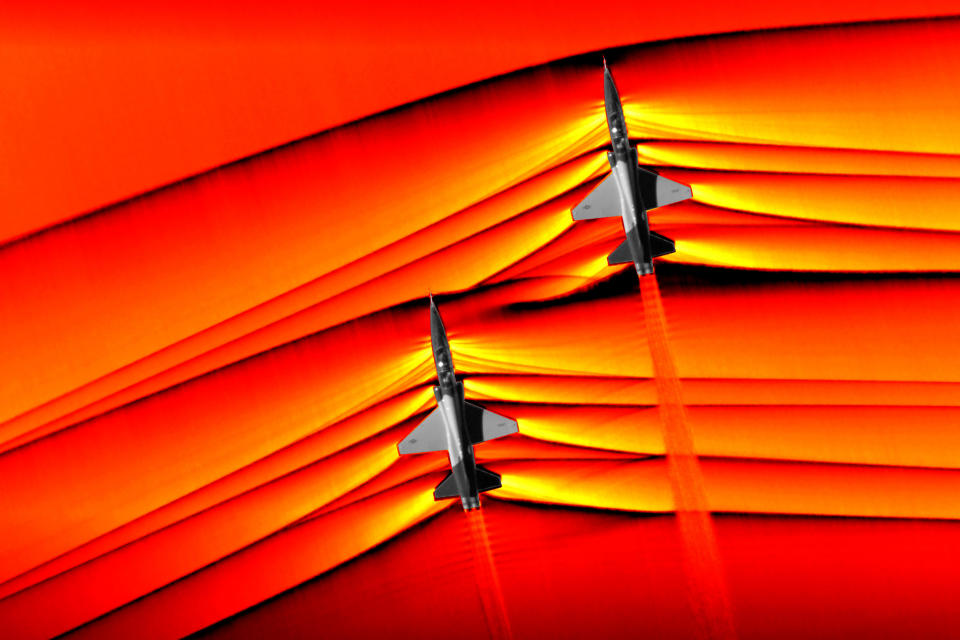
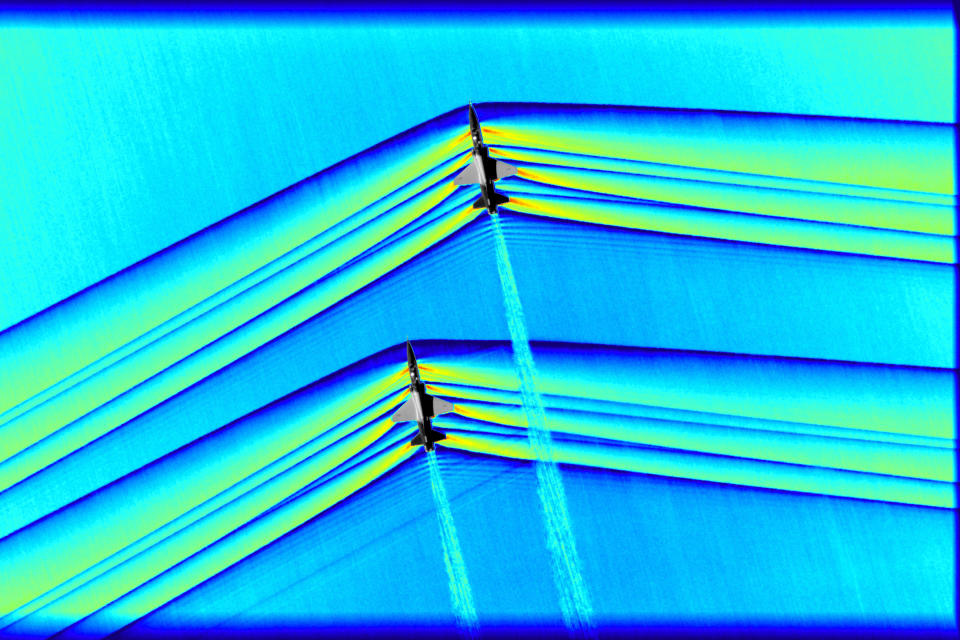
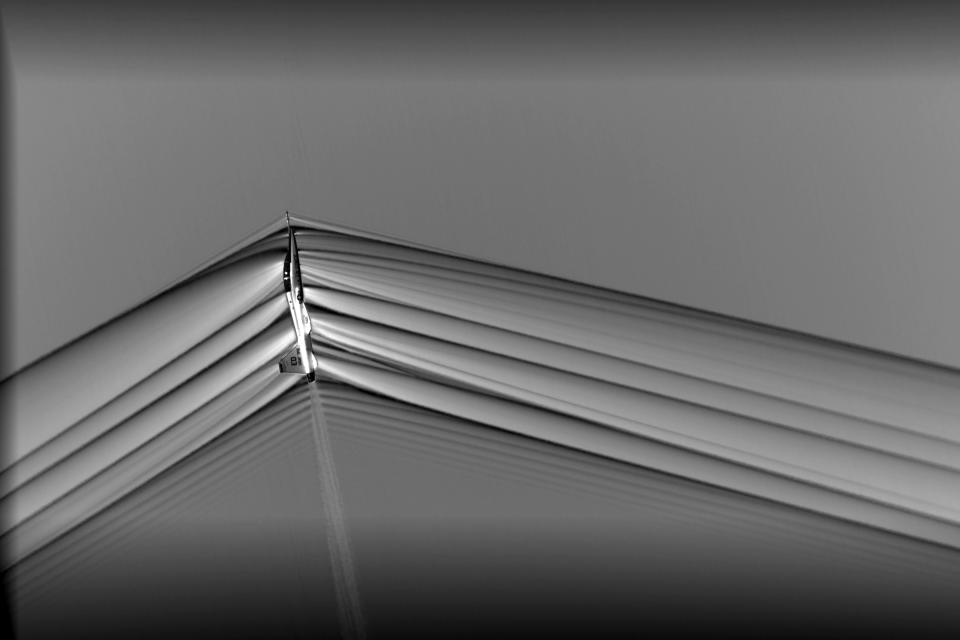
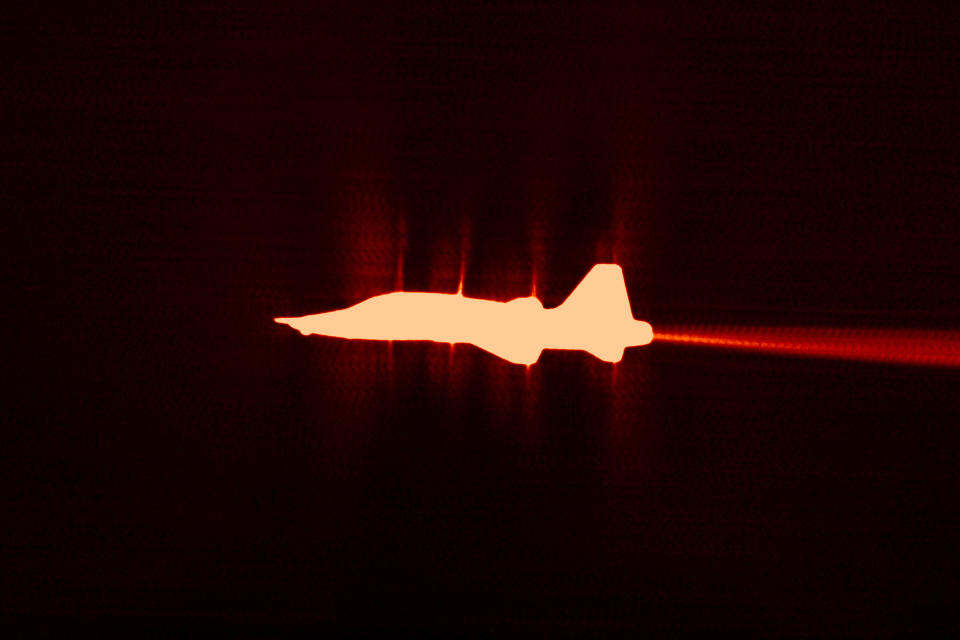
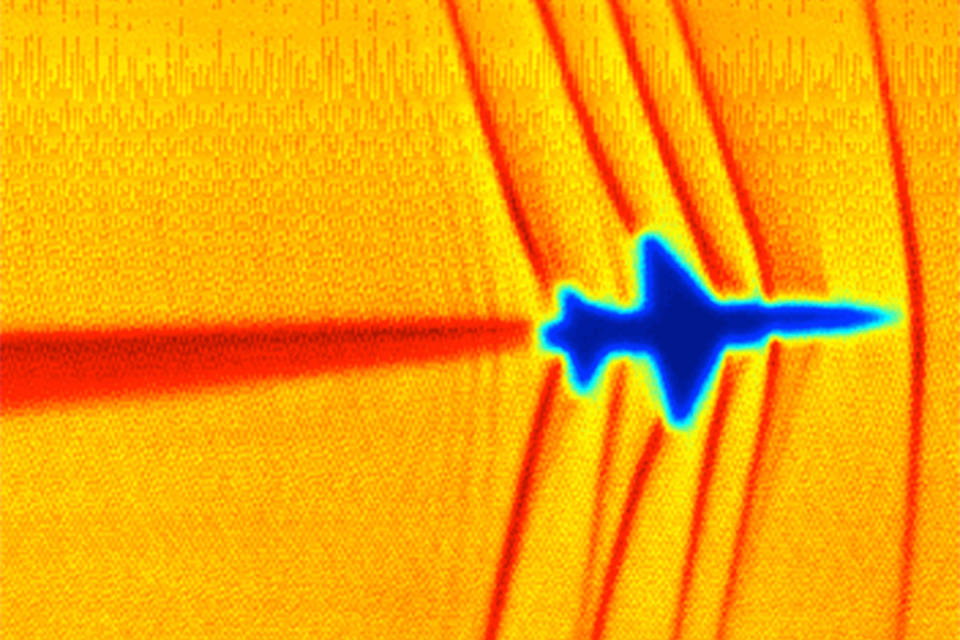
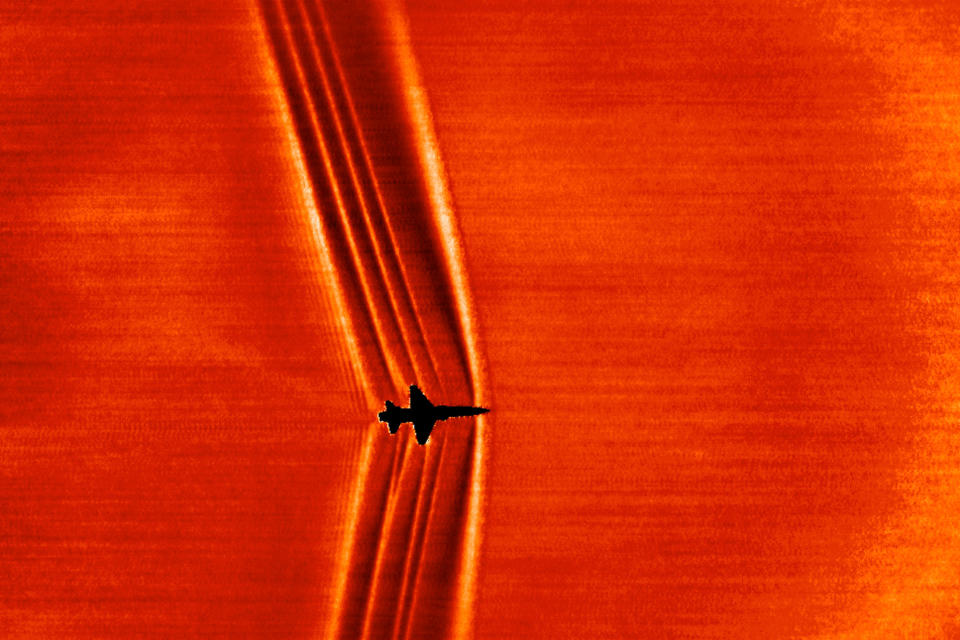
NASA continues to shock. Capturing the first-ever images showing the interaction between shockwaves of two supersonic aircrafts, the agency has hit another milestone in supersonic research.
The shockwaves, caused by rapid pressure changes when the aircraft flies faster than the speed of sound, are responsible for what we hear on the ground known as a sonic boom. The images serve as an important milestone in NASA’s research and efforts to make sonic booms quieter. The shocks coming from the aircraft flying faster than 768 miles per hour can be seen interacting in a curve.
“This is because the trailing T-38 is flying in the wake of the leading aircraft, so the shocks are going to be shaped differently,” said Neal Smith, a research engineer with Aerospace Computing Inc at NASA Ames’ fluid mechanic laboratory. “This data is really going to help us advance our understanding of how these shocks interact.”
NASA has been using a modern version of a 150-year-old German photography technique called Schlieren photography to study shockwaves. Schlieren images reveal shockwaves that occur due to changes in air density and refractive index. Until recently, most imagery made this way was captured during model testing in wind tunnels. But Schlieren images made in flight are much more challenging.
The upgraded system that took these images allowed researches to capture three times the amount of data in the same amount of time than before. The frame rate increased to 1,400 frames per second and made it easier to capture a larger amount of samples with even more detail. But the timing still had to be perfect.
“We never dreamt that it would be this clear, this beautiful,” physical scientist J.T. Heineck of NASA’s Ames Research Center said.
In 2015, NASA tested its first flights in demonstrating Background Oriented Schlieren using Celestial Objects (BOSCO) technology, which successfully captured measurable images of shockwaves with just one aircraft.
Check out the gallery above to see NASA’s Schlieren photography used since 2015.






